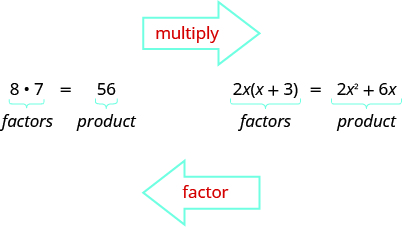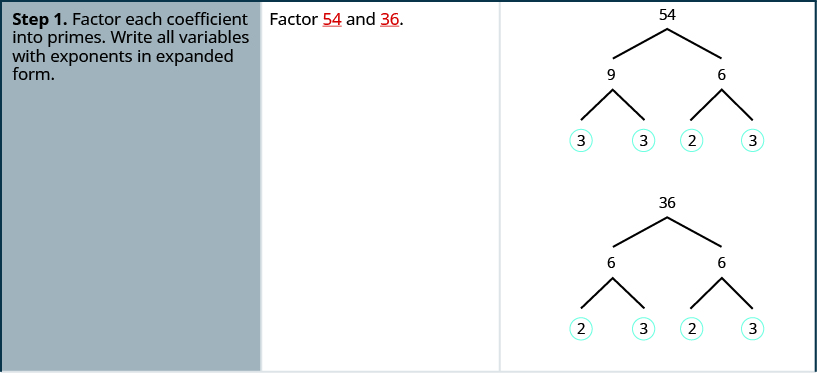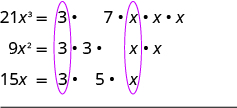| << Chapter < Page | Chapter >> Page > |
Before you get started, take this readiness quiz.
Earlier we multiplied factors together to get a product. Now, we will be reversing this process; we will start with a product and then break it down into its factors. Splitting a product into factors is called factoring .

We have learned how to factor numbers to find the least common multiple (LCM) of two or more numbers. Now we will factor expressions and find the greatest common factor of two or more expressions. The method we use is similar to what we used to find the LCM.
The greatest common factor (GCF) of two or more expressions is the largest expression that is a factor of all the expressions.
First we’ll find the GCF of two numbers.
Find the GCF of 54 and 36.




Notice that, because the GCF is a factor of both numbers, 54 and 36 can be written as multiples of 18.
We summarize the steps we use to find the GCF below.
In the first example, the GCF was a constant. In the next two examples, we will get variables in the greatest common factor.
Find the greatest common factor of .
| Factor each coefficient into primes and write the variables with exponents in expanded form. Circle the common factors in each column. |
 |
| Bring down the common factors. |
 |
| Multiply the factors. |
 |
| The GCF of and is |
Find the GCF of .
| Factor each coefficient into primes and write the variables with exponents in expanded form. Circle the common factors in each column. |
 |
| Bring down the common factors. |
 |
| Multiply the factors. |
 |
| The GCF of and is . |
Find the GCF of: .
| Factor each coefficient into primes and write the variables with exponents in expanded form. Circle the common factors in each column. |
 |
| Bring down the common factors. |
 |
| Multiply the factors. |
 |
| The GCF of , and is |
Just like in arithmetic, where it is sometimes useful to represent a number in factored form (for example, 12 as in algebra, it can be useful to represent a polynomial in factored form. One way to do this is by finding the GCF of all the terms. Remember, we multiply a polynomial by a monomial as follows:

Notification Switch
Would you like to follow the 'Elementary algebra' conversation and receive update notifications?